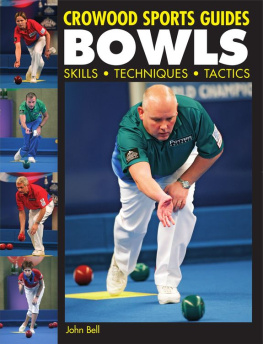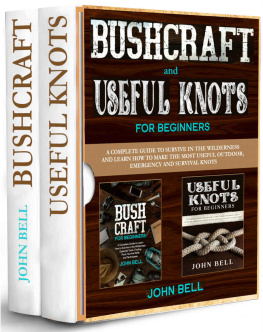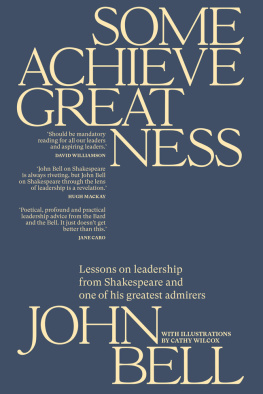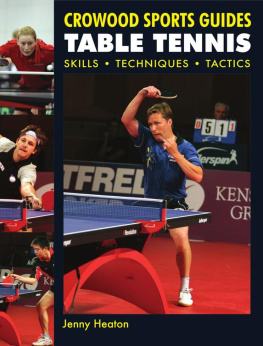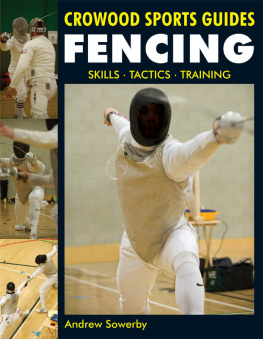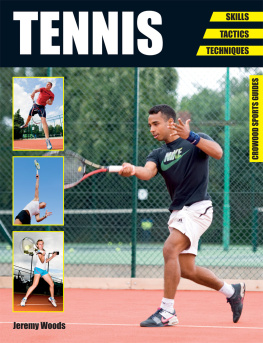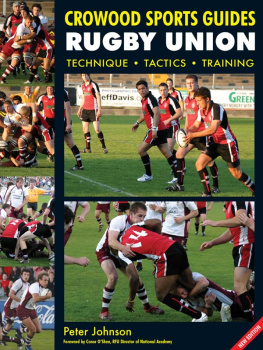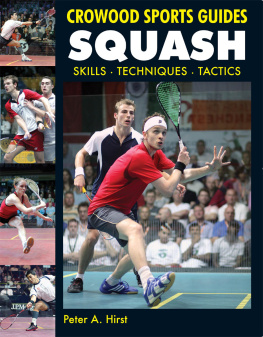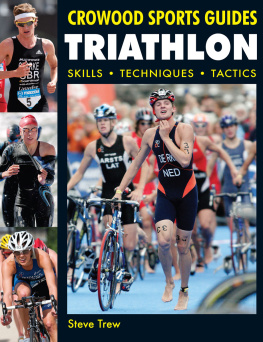John Bell - BOWLS: Skills, Techniques, Tactics
Here you can read online John Bell - BOWLS: Skills, Techniques, Tactics full text of the book (entire story) in english for free. Download pdf and epub, get meaning, cover and reviews about this ebook. year: 2011, publisher: Crowood, genre: Home and family. Description of the work, (preface) as well as reviews are available. Best literature library LitArk.com created for fans of good reading and offers a wide selection of genres:
Romance novel
Science fiction
Adventure
Detective
Science
History
Home and family
Prose
Art
Politics
Computer
Non-fiction
Religion
Business
Children
Humor
Choose a favorite category and find really read worthwhile books. Enjoy immersion in the world of imagination, feel the emotions of the characters or learn something new for yourself, make an fascinating discovery.
- Book:BOWLS: Skills, Techniques, Tactics
- Author:
- Publisher:Crowood
- Genre:
- Year:2011
- Rating:5 / 5
- Favourites:Add to favourites
- Your mark:
- 100
- 1
- 2
- 3
- 4
- 5
BOWLS: Skills, Techniques, Tactics: summary, description and annotation
We offer to read an annotation, description, summary or preface (depends on what the author of the book "BOWLS: Skills, Techniques, Tactics" wrote himself). If you haven't found the necessary information about the book — write in the comments, we will try to find it.
BOWLS: Skills, Techniques, Tactics — read online for free the complete book (whole text) full work
Below is the text of the book, divided by pages. System saving the place of the last page read, allows you to conveniently read the book "BOWLS: Skills, Techniques, Tactics" online for free, without having to search again every time where you left off. Put a bookmark, and you can go to the page where you finished reading at any time.
Font size:
Interval:
Bookmark:

Bowls is a fairly simple game with all participants having one primary aim: to get the bowl near to the jack. Whatever the degree of science applied, the objectives remain the same. In this guide, John Bell fully acknowledges this and reminds the reader that, whether one is a World Class performer or a raw beginner, the fundamental rules always apply. The greater the skill acquired, the easier the basic principles may be forgotten.
The author, in utilizing his vast experience of playing and managing bowls at the highest level, will assist every bowls coach and student of this sport to study carefully the recommendations, which adequately apply to all bowlers. With improved skill there must, automatically, come renewed enthusiasm from every bowler to play to their best ability and to ultimately achieve their goal.
Happy reading!
Tony Allcock MBE
The Author and publishers would like to thank the following for their help and cooperation in the production of this book: Lynne Rowley, for her untiring typing services; Stuart Airey, for his classic demonstration skills; Paul Walker, for capturing them so well on camera; Cumbria Indoor Bowls Club, for kindly accommodating our photo sessions; Melvyn Beck and Bowls International magazine, for supplying the excellent archive photos and various invaluable pieces of information; Rex Hazeldine, for his warm-up routines; and the English Bowling Association, World Bowls Ltd and the English Bowls Coaching Scheme for their assistance.
To my wife Jeanette, and our Emma and John a massive thank you. From quality control to inspiring suggestions, they have contributed and supported me during the production of this book, as they have done throughout my bowling career. I have immense pleasure in dedicating this book to them, two of whom, I am delighted to report, are now accomplished bowlers in their own right.

The author, John Bell.
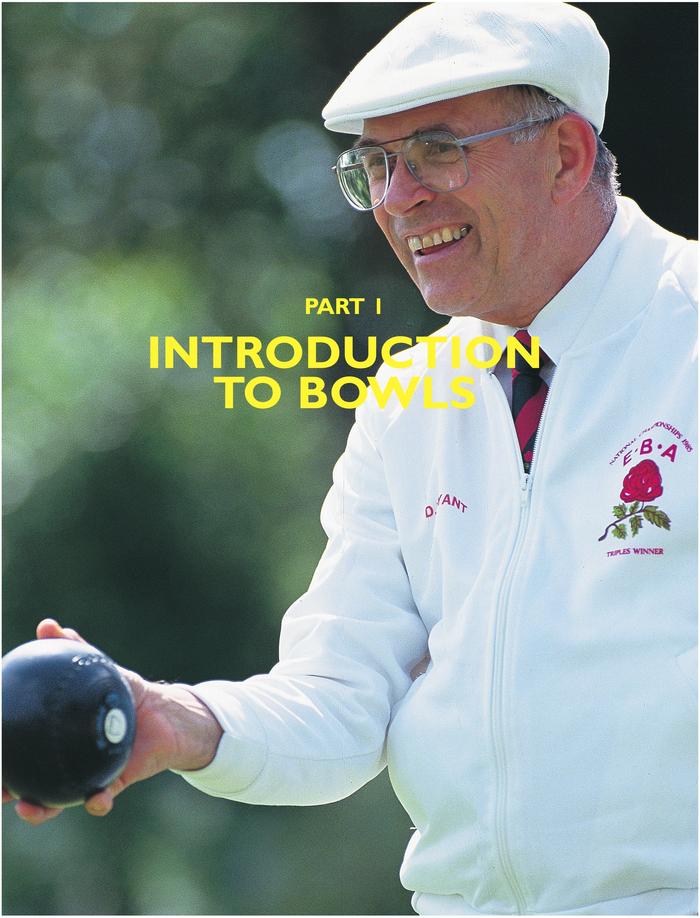
It is contended by certain chronicles that bowling is the oldest outdoor sport in the world some form of bowling, that is, because the term has embraced games that are more allied to skittles than lawn bowls. Nevertheless, it is known that as early as 5200 BC the Chinese rolled stones to a hole in the ground with the object of getting as near to the lip as possible. There is also a picture of bowls being played in Egypt around 300 BC , from where the sport spread to Greece and Rome. It made its way to Northern Europe around the tenth century and onward into Britain. Could it be that our term bowls is derived from the Latin word bulla, used for ball games in general? The Aztecs too indulged in a similar game.
The date of its introduction remains unknown, but a bowling green is mentioned in the records of Chichester Castle soon after 1066. Christchurch claims its bowling origins date back to 1100 and Bedford Priory to 1220, whilst Southampton Bowling Club was founded in 1299. We can be certain that a type of bowls as we know it, depicted in the earliest known drawing of bowls in the Royal Library at Windsor, was played in England during the thirteenth century.
Edward I (12721307) was the first English monarch to play bowls. Royalty and landed gentry had greens built on their own estates, but at large the game was played on areas of turf associated with taverns and inns. It became very popular, in fact too popular, and attracted severe criticism for creating serious social problems. One report describes the game as attracting dissolute persons, betting, drunkenness, quarrelling and even duelling. It was even seen to be undermining the countrys security as players were spending too much time bowling and not enough improving their archery skills, which were required for national defence. The monarchy was therefore called upon to suppress the game: Edward III, and later Richard II in 1388, passed laws forbidding bowls and other sports. Anyone caught in the act was liable to two years in prison and a fine of 10.
Henry VIII gave the sport a little respite in 1541 by signing a statute, which stayed on the books until 1845, allowing artificers, labourers, apprentices and servants to play bowls at Christmas but only in their masters house and presence. The wealthier gentry could play within their own gardens and orchards but only under licence; if they played outside their own premises they were liable to a fine of six shillings and eight pence.
Henry himself enjoyed a game of bowls and had his own green at Hampton Court, where records show that large gambling bets were placed. This practice became so popular that a clause was added to the statute of 1541 to stop greens being established for gain. By that time he would probably have been playing with biased bowls, following an incident at Goole on 31 March 1522 that was to change the face of bowls and literally shape it to the game we know today. The Duke of Suffolk delivered his bowl with such force that it shattered into tiny pieces. Determined to continue, he went inside and espied a large wooden ornamental knob at the bottom of his banisters. He took a saw, removed it and returned to his game.
The new bowl, needless to say, took a curved line reflecting its sawn shape. The day of the biased bowl had dawned.
The more liberal attitude of Henry VIII and his son Edward VI was quickly replaced by a less tolerant Queen Mary in 1553. Two years after her succession she withdrew all bowling licences, deeming the game an excuse for unlawful assemblies, conventions, seditions and conspiracies. Indeed the game was considered to be of questionable repute for the rest of the sixteenth century, although things must have relaxed somewhat by 1588 when Drake played his much celebrated, and published, game on Plymouth Hoe.
The seventeenth century saw the game receive much greater royal patronage. Charles I enjoyed the sport and gambled heavily on his games. He even had a green laid for him while he was a prisoner in Carisbrooke Castle. His son Charles II was an even bigger bowling devotee, and the games first royal administrator. Together with his brother James, Duke of York, and the Duke of Birmingham he drew up a new set of rules in 1670 for the regulation and standardization of the game. Before his time the rules of play varied from green to green. Interestingly, one of these new laws was always keep your temper.
Early settlers to the new colonies also took their bowls with them. Bowling was a popular pastime in New York in the eighteenth century, where there is still a park in Manhattan called Bowling Green and a stained-glass window in a nearby building vividly depicts the art of bowls. Boston, too, was a popular venue for bowls, though the Boston Tea Party and the subsequent war of independence ensured that the British game lost favour overnight. The game was also taken to Australia with the early fleets and the first reported bowls match was at Sandy Bay, Hobart, in 1845.
Nearer to home the game had been thriving in Scotland since early in the seventeenth century. It was the Scots who continued where Charles II had left off and produced the most comprehensive set of rules to date, courtesy of a Glasgow solicitor called William Mitchell. These were to come into general use and were adopted in many countries. By 1888 there were 364 clubs in Scotland and in 1892 the Scottish Bowling Association was formed.
Font size:
Interval:
Bookmark:
Similar books «BOWLS: Skills, Techniques, Tactics»
Look at similar books to BOWLS: Skills, Techniques, Tactics. We have selected literature similar in name and meaning in the hope of providing readers with more options to find new, interesting, not yet read works.
Discussion, reviews of the book BOWLS: Skills, Techniques, Tactics and just readers' own opinions. Leave your comments, write what you think about the work, its meaning or the main characters. Specify what exactly you liked and what you didn't like, and why you think so.

